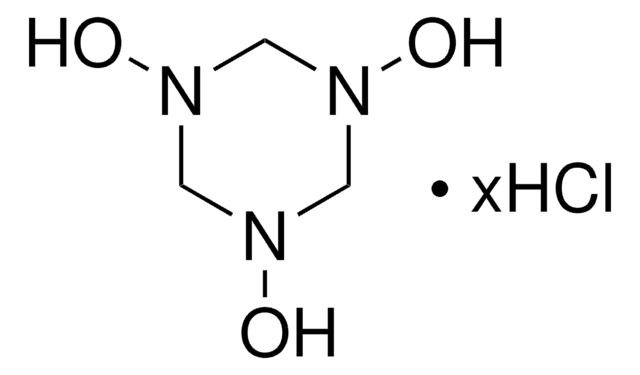B9180
BW A868C
≥98% (HPLC)
Synonim(y):
3-[(2-Cyclohexyl-2-hydroxyethyl)amino]-2,5-dioxo-1-(phenylmethyl)- 4-imidazolidineheptanoic acid
About This Item
Polecane produkty
Próba
≥98% (HPLC)
Postać
film
kolor
colorless
rozpuszczalność
DMSO: 5 mg/mL, clear
temp. przechowywania
−20°C
ciąg SMILES
OC(CNN1C(CCCCCCC(O)=O)C(=O)N(Cc2ccccc2)C1=O)C3CCCCC3
InChI
1S/C25H37N3O5/c29-22(20-13-7-4-8-14-20)17-26-28-21(15-9-1-2-10-16-23(30)31)24(32)27(25(28)33)18-19-11-5-3-6-12-19/h3,5-6,11-12,20-22,26,29H,1-2,4,7-10,13-18H2,(H,30,31)
Klucz InChI
YZJVWSKJHGEIBL-UHFFFAOYSA-N
Działania biochem./fizjol.
Cechy i korzyści
Kod klasy składowania
11 - Combustible Solids
Klasa zagrożenia wodnego (WGK)
WGK 3
Temperatura zapłonu (°F)
Not applicable
Temperatura zapłonu (°C)
Not applicable
Środki ochrony indywidualnej
Eyeshields, Gloves, type N95 (US)
Certyfikaty analizy (CoA)
Poszukaj Certyfikaty analizy (CoA), wpisując numer partii/serii produktów. Numery serii i partii można znaleźć na etykiecie produktu po słowach „seria” lub „partia”.
Masz już ten produkt?
Dokumenty związane z niedawno zakupionymi produktami zostały zamieszczone w Bibliotece dokumentów.
Nasz zespół naukowców ma doświadczenie we wszystkich obszarach badań, w tym w naukach przyrodniczych, materiałoznawstwie, syntezie chemicznej, chromatografii, analityce i wielu innych dziedzinach.
Skontaktuj się z zespołem ds. pomocy technicznej





